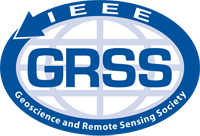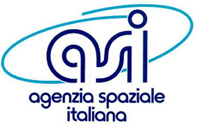FD-01: From patch similarity to nonlocal processing: patch-based methods & applications in remote sensing
Florence Tupin, Charles Deledalle, and Loïc Denis
Sunday, July 26
08:30 - 17:30
Abstract:
Patches are small image parts that capture both texture and local structure information. Though being crude low-level features compared to higher level descriptors, they have led to very powerful approaches in a wide range of image processing tasks such as deblurring, inpainting or classification. They form a core component of most current image restoration techniques.
In the past few years, several extensions of patch-based processing have been developed specifically for remote sensing, in particular for hyperspectral and SAR imaging. Strong fluctuations due to speckle indeed prevent from direct analysis and interpretation of radiometric, polarimetric or interferometric information from SAR images. Robust estimation procedures are thus essential to the successful use of SAR imaging. Given the efforts devoted to producing very high-resolution imaging systems, estimation of radar properties must preserve at best the spatial resolution and combine information from all available channels (interferometric, polarimetric, multi-date, multi-angle). Patch-based methods are among the most promising approaches to reach these goals.
The aim of this tutorial is to give the basics of patch-based approaches, to highlight the connection between several image models (block matching methods, dictionnary-based processing, non-local regularizations, MRF/CRF) and to illustrate on the example of SAR signals how these methods can provide a powerful framework for signal estimation. The tutorial is intended both for researchers interested on the methodological aspects of patch-based methods for image processing and remote sensing in general, and for people interested by the applicative potential of such approaches for SAR data.
This full-day tutorial is divided into two main parts: a methodological session in the morning on patch-based approaches and their use for remote sensing and SAR imagery, and a practical session in the afternoon with a focus on practical aspects through an open source code: NL-SAR.
Morning session: The first part of the tutorial is a general presentation of patch-based models for image processing problems. In particular their use to denoise images is described through the three milestones of such approaches: patch-similarity, patch estimation, and reprojection to the image space. The second part is dedicated to the specificities of remote sensing images, especially hyper-spectral and radar images, with a special focus on the basic concepts of SAR imagery and the statistical modeling of such signals, either amplitude, interferometric or polarimetric. Estimators of multivariate SAR data are reviewed. In a third part, advanced patch-based techniques for SAR signal estimation will be presented. The description of the patch based estimation framework with its three main steps will be detailed with a review of current state of the art approaches. The impact of parameter choices will be discussed. At last, a discussion on the use of this framework to other data, on open problems and new trends will be led.
Afternoon session: To complete the morning lecture focusing on methodological aspects, the afternoon session is devoted to practical aspects. In a first part, some hidden key steps of such approaches will be discussed (transforming similarity to weight, dealing with spatially correlated speckle, finding automatically the compromise between patch size, window size and pre-filtering). In a second part, a practical demonstration of NL-SAR open-source toolbox will be given (installation, setting of interfaces with Matlab, Python, IDL, PolSARPro, data preparation, kernel learning, algorithm running). A practical demonstration will be given, and a detailed analysis of the obtained results for different kinds of data will be led.
Biography:
Florence Tupin (SM'07) is currently Professor at Telecom ParisTech, France. She received the Engineer degree in 1994 and the Ph.D. degree in signal and image processing from École Nationale Superieure des Telecommunications (ENST), Paris, France in 1997. From 1997 to 1998, she worked with SAGEM in fingerprint recognition. Since november 1998, she has been Associate Professor and then Professor of signal processing and computer vision at Telecom ParisTech in the Image and Signal Processing Department. Since 2014, she is head of the Image Processing and Interpretation group. Her research interests are image processing and interpretation, three-dimensional reconstruction, specially for remote sensing and SAR applications, and earth observation. In 2007, she was chair of the Urban Remote Sensing Joint Event held in Paris. Since 2003, she is also member of the technical committees "Pattern Recognition in Remote Sensing" of the International Association for Pattern Recognition (IAPR) and "URBAN", the biennial GRSS/ISPRS Joint Workshops on "Remote Sensing and Data Fusion over Urban Areas" from 2004-2006, CMRT (2013), GRETSI (2013, 2015), RFIA (2014). From 2005 to 2007, she was Associate Editor of the French journal "Signal Processing". She currently serves as an Associate Editor of IEEE Transactions on Geoscience and Remote Sensing.
Charles Deledalle received the engineer degree from EPITA, France, in 2008 and the Ph.D. degree from Telecom ParisTech, France, in 2011. He made a postdoctoral fellowship at Univ. Paris IX, France. He is currently CNRS Researcher at IMB, Univ. Bordeaux, France. His research interests include image denoising and super-resolution with a focus on parameter estimation. He received the IEEE ICIP Best Student Paper Award in 2010 and the ISIS/EEA/GRETSI Best PhD Award in 2012.
Loïc Denis is currently Assistant Professor at Telecom Saint-Etienne, Université de Saint-Etienne, France. He received the Engineer degree in 2003 from CPE Lyon, France and the Ph.D. degree in image processing from Université de Saint-Etienne in 2006. He then spent one year at Telecom ParisTech as a postdoc working on SAR imaging. Since then most of his research focuses on image restoration and reconstruction for remote sensing, metrology and astronomy. He spent two years working with astronomers at the Observatory of Lyon, before returning to the Université de Saint-Etienne.




